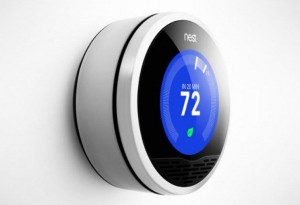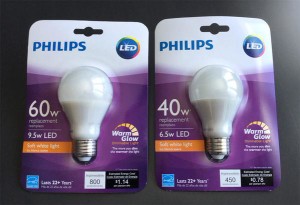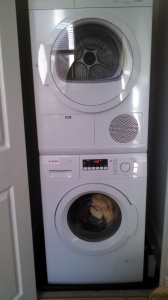 Very Cool and Very Smart, The Nest thermometer learns and helps you manage your settings
Very Cool and Very Smart, The Nest thermometer learns and helps you manage your settings
It is cold this winter – really cold and everyone is trying to stay warm while not spending an arm and a leg on utilities. Here are a dozen quick and dirty things you could do right now to feel a little warmer and save.
Turn the heat down – even one degree can make a big difference in your monthly bill.
Turn the temp down on your hot water heater. Other than the dryer this may be the appliance you spend the most money operating.
Turn off the lights when you leave the room. If you simply cannot remember to do this consider installing occupancy sensing controls so the lights turn themselves off.
Adjust the settings in your refrigerator so that it keeps everything cold but not operating all the time. This setting varies by the type of fridge and how much stuff you keep inside. Worried? Check the temp with a fridge thermometer and adjust accordingly.
Unplug your computer and electronics chargers when you are not using them. Turn off your modem when you leave the house.
 Change your incandescent bulbs to LED – A 60 watt equivalent uses just 9.5 watts!
Change your incandescent bulbs to LED – A 60 watt equivalent uses just 9.5 watts!
Change your lightbulbs from incandescent to LED.
 Give your dryer a rest, use a clothes line.
Give your dryer a rest, use a clothes line.
Wash your clothes in cold water
Stop using the dryer and hang your clothes on a drying rack or, in nice weather, hang it on the line. IKEA has some nice drying racks that can be set up inside or out. Your dryer uses a HUGE amount of power. If you do use the dryer, make sure the lint screen is empty and that the exhaust line is clean and clear of debris.
Have your heater serviced so that it operates optimally and make sure to change the filter(s) at least every three months.
Check for drafts around your doors by running your hand along the edges. Most common leak spots are at the latch and along the floor. Install or beef-up already installed weather stripping. Put a draft stopper along the bottom edge of the door. This could be as simple as a rolled-up towel or small blanket pushed against the door or as fancy as a decoratively embroidered tube filled with beans or sand.
Check for drafts around your windows by once again running your hand along the edges and around the trim. Common leak spots include the bottom and top corners and, on a double hung window, along the seam between the two windows. On a casement window the leakage is usually along the edge that opens and at the hand crank. How to seal these? There are way too many options that range in levels of effort and permanence. Here are a few from simple and cheap to more in-depth:
- Place draft stoppers on the culprit seams.
- Tape the windows shut for the season. The hardware store sells weather sealing tape that is easy to apply AND take off. Also, that blue masking tape you have left over from your last painting job works well for this application. Not pretty to look at but may help in the short term.
- Install a sheet of plastic over the opening. Home improvement/ hardware stores sell plastic film kits that tighten with the heat from a hair dryer.
- Look outside and see if there are any obvious air infiltration culprits like missing caulk or even missing bricks in the wall! If it is missing caulk then re-caulk it. A brick? You made need to call a professional.
- When the weather is a bit milder take a look at how the windows were installed. The science of window installation has come a long way in the past few years. Chances are that the windows were not sealed well when they were installed. You might consider having a contractor reinstall the windows with proper air and moisture sealing techniques.
Check the energy efficiency of your appliances – refrigerator, washer, dryer, dishwasher, oven, stove – by looking up the make, model and year on the manufacturer’s website. If not Energy Star rated consider getting a new Energy Star rated appliance AND applying for a rebate through your electric company. You may be able to cut the energy you use to operate it by more than a third with a more efficient unit.
